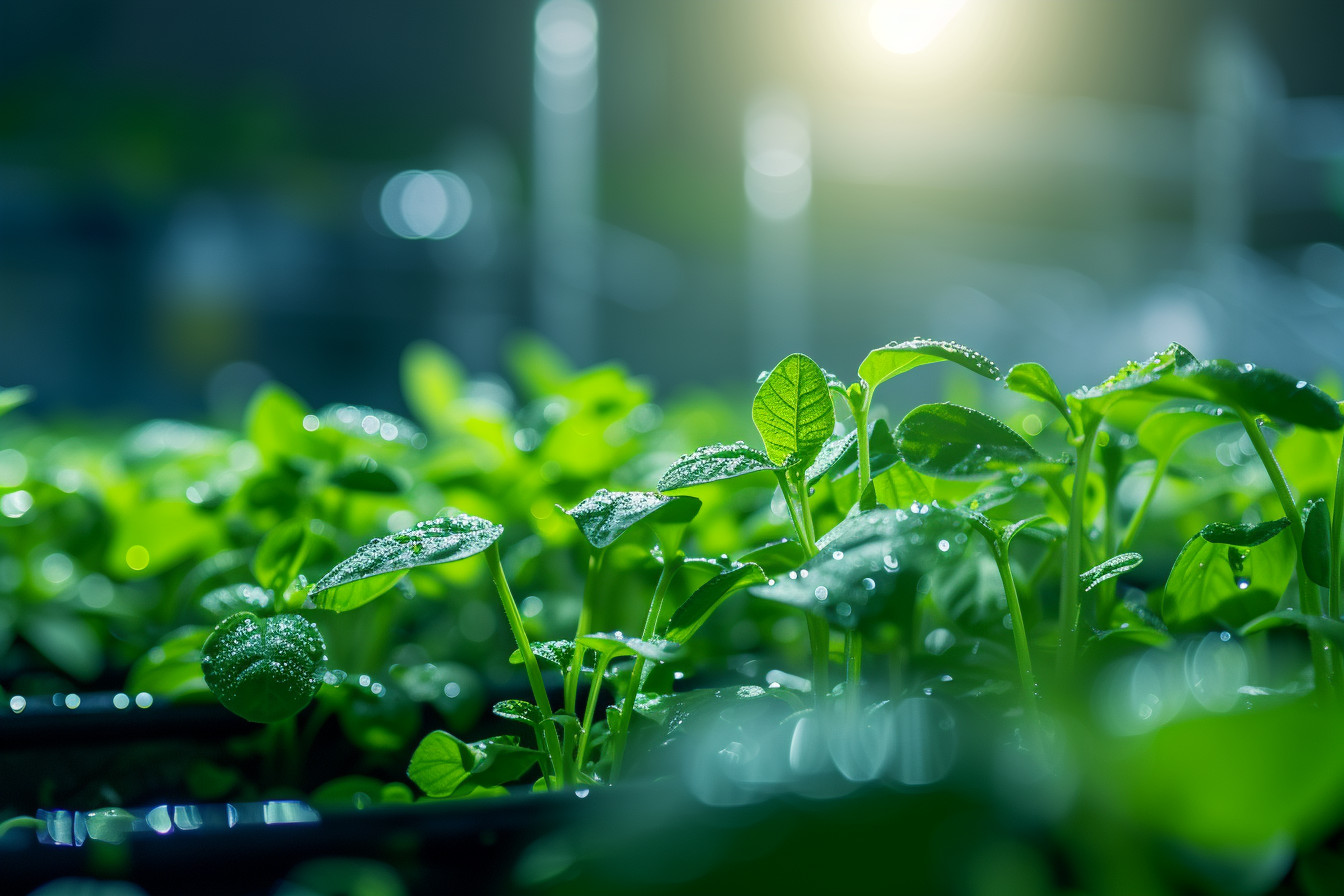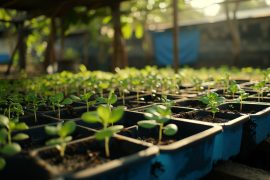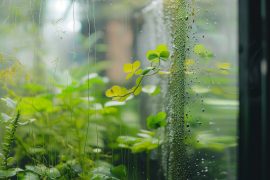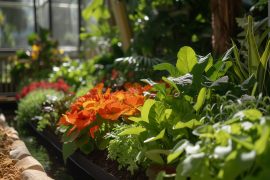Scaling up an aquaponic system from a cozy corner in your home to something that resembles more of a commercial operation might sound like the leap of the century. But here’s the thing: it’s totally doable and, honestly, pretty exciting!
I’ve journeyed down this path myself, starting with just a tiny setup that barely produced enough basil to garnish my pasta dishes and moving on to one that supplies restaurants with fresh lettuce year-round. It all boils down to understanding the principles behind aquaponics and how incredibly scalable they can be.
Aquaponics merges two amazing worlds: aquaculture (raising fish) and hydroponics (growing plants without soil), using systems ranging in size from as small as an aquarium to vast ones covering acres.
This method not only saves water but also creates harmony between plant life and aquatic animals, producing results worthy of any good meal directly from your own mini-farm, should you decide it should stay small-scale or if expanding beckons.
Aquaponic System Components
Diving right into the world of aquaponics can feel like you’re exploring a whole new universe. Picture this: It’s part gardening, part fish farming—all rolled into one symbiotic environment where both plants and aquatic animals thrive together. It’s honestly fascinating! So if you’re itching to know what makes up an aquaponic system, let me walk you through its main components.
First off, we’ve got the fish tank. This is a sweet home for your friends, who play a crucial role in this setup by producing waste—essentially food for your plants. Yes, that sounds kind of gross, but trust me, it’s all natural and super effective!
Next comes the star player—the grow bed where magic happens (a.k.a. plant cultivation). Filled with growing media such as gravel or clay pellets, these beds host roots directly intertwined amidst nutrient-rich water, which once was a waste product from our fish buddies underneath—talk about recycling at its finest.
Then there is something called a biofilter, quite essential yet not always talked about much outside geeky circles, I might add! Biofilters are critical because they provide nifty spots for beneficial bacteria to reside—they literally transform ammonia from fish poop (yes, again) into nitrites and then nitrates—plant-friendly nutrients, right there, folks!
Lastly, we cannot forget about two more heroes: the pump(s) along with pipes and siphons aiding circulation throughout our mini ecosystem, thus making sure everyone stays healthy and happy, including veggies, herbs, and even fruit sometimes depending on how ambitious or experimental one feels.
Each component plays an already well-respected symphonic note contributing towards sustainability significance and nature-inspired solutions feeding us back full circle. Our approach to nurturing meals straight from the heart truly captures the essence of the ‘from seed plate’ philosophy, don’t you think?
Scalability of Aquaponic Systems
Scaling an aquaponic system from a cozy setup in your backyard to something that resembles more of a commercial operation sounds daunting, right? But let’s break it down. It’s not just about going bigger; it’s understanding the nuances that make each step up both challenging and rewarding.
Starting out small is how most folks dip their toes into aquaponics. Maybe you’ve got a simple fish tank hooked up to some media beds where your herbs are thriving better than they ever did in traditional soil gardens.
That’s the magic kicking off! This stage is crucial because it teaches us patience. Watching those first sprouts emerge brings such joy, doesn’t it? Yet as we dream bigger, scalability becomes our next puzzle piece.
When scaling up an aquatic dreamscape like this, consider water volume ratios between fish tanks and grow beds. Significant variables need attention for optimal plant growth while keeping our friends healthy too. Balance is key. You’re no longer just maintaining but expanding environmental control, sustaining larger ecosystems with greater complexity.
Let me give you numbers appealing mainly due to diverse outcome potentials. A table might illustrate distinct comparisons:
| System Size | Fish Tank Volume (gallons) | Grow Bed Area (sq ft) |
|---|---|---|
| Small | 50-100 | 20-40 |
| Medium | 500 | -800 |
The shift signifies tangible estimations guiding planners from conceptual phases to implementation stages, navigating processes, and securing balanced cycles amongst the living components involved.
Larger scales introduce complexities yet unveil profound connections. nurturing life, symbiotically coexisting beneath sunlit canopies
Can there be anything more serene and purposeful than joining hands on earth, cultivating bounty, sustenance, and harmony? Harmony lies within reach, embarking on extended paths. Exploration and discovery await.
Exploring home-scale aquaponics
Diving into the world of home-based aquaponics, I found myself mesmerized. It’s a compact universe where fish and plants live in a harmonious cycle—sort of like your own ecosystem right there on your patio or even inside! You’ve got your aquatic creatures (usually fish) chilling at the bottom, while up top, you’ve got greens and veggies thriving on those nutrients that the water brings them.
Here’s how it usually works for someone just kicking off their journey with aquaponics: you start small. Think along the lines of simple setups involving nothing more than reused plastic barrels split down to serve both as fish tanks below and grow beds above.
A modest pump recirculates water between these two components, keeping everyone happy—think fish poop nirvana for plants!
What bolsters this enthusiasm further is seeing real numbers roll in from hobbyists who dove headfirst into home-sized systems:
| Participation Level | Average Yield per Week |
|---|---|
| Beginner | 2-3 lbs |
| Intermediate | 5-8 lbs |
It’s riveting because each pound harvested represents not only personal satisfaction but also tangible savings at the grocery store over time.
Let me share an anecdote about my friend Jamie. They started out poking around online forums, trying to fathom what size tank would fit nicely next to their sunniest window. Fast forward six months. They’re giving away herbs by bushels, mostly due to their now self-sufficient basil plant empire powered entirely by tilapia waste products!
Challenges and Considerations for Scaling Up
Scaling up an aquaponic system from a home setup to commercial operations comes with its fair share of challenges and considerations. Trust me, it’s not as simple as just buying more tanks or adding extra plants. The leap is substantial and requires careful planning, understanding, and adjustment.
One big hurdle? Costs skyrocket when scaling up. It’s easy to underestimate the financial requirements for larger systems—we’re talking about everything from construction costs to energy bills that could make your eyes water faster than chopping onions!
Water quality management takes center stage too. Making sure those nitrates, phosphates, and ammonia levels stay where they should be turned into almost a full-time job itself. Nope, overfeeding our aquatic friends or having them cramped won’t cut it. They need space, excellent filtration, and regular health checks.
Anecdote time Heard of the farmer who skipped his daily water testing routine, thinking, “Ah well, once missing, it won’t hurt”? Fast forward two weeks and an unexpected algae bloom turned half his tank into Nemo’s worst nightmare.
Consistency, folks. Let this tale remind us to never skip maintenance days, no matter how repetitive they seem. Detours aside, remember to think about the long-term success others have achieved. Yes, obstacles abound, yet possibilities are endless. Keeping one foot firmly planted in patience and another striding confidently towards innovation might just yield amazing results.
Commercial Aquaponic Operations
Diving into the waters of commercial aquaponics feels a bit like venturing into unknown territories, but it’s thrilling and, for sure, quite rewarding. For starters, this isn’t your backyard setup where you might be growing some herbs alongside a couple of fish for personal consumption. We’re talking big-scale operations that can feed communities while still being kind to Mother Nature.
One thing I’ve noticed in my explorations is the sheer versatility of products these setups can churn out—from leafy greens bursting with flavor to protein-packed fish that couldn’t get any fresher if they tried! But how do businesses manage to scale up from those humble home start-ups? It all comes down to technology, innovation, and, quite frankly, a solid understanding of both biology and engineering principles.
Let’s talk numbers, because who doesn’t love tangible proof, right? Take “Bountiful Harvest Inc.”, an operation I came across on one sunny afternoon trip around Virginia. This facility has:
| Parameter | Stats |
|---|---|
| Area Covered | 5 acres |
| Yearly lettuce production | 200k units |
| Fish Varieties Cultivated | Tilapia and catfish |
With systems deliberately designed to allow maximum yield within confined spaces and resources recycled back through their ecosystem, there’s little waste output, which honestly makes me sleep better at night knowing such sustainability exists!
Now onto challenges—because, let’s face it, nothing worthwhile ever came easy, right. They range widely, depending heavily on location, climate, and even local regulations governing water use or animal rearing practices.
Yet stories abound about the amazing resilience and adaptability exhibited by entrepreneurs. Space AquaFarms Texas had to overhaul the entire irrigation system mid-season due to unexpected drought conditions, proving agility and resilience. not just fancy corporate buzzwords but survival traits sector
Hearing about these ventures fills me with excitement and curiosity. What started as a simple concept of growing food using fewer inputs turned into a global movement of passionate innovators committed to changing the way we think about producing and consuming our meals.
If anything, commercial aqua farming showcases humans’ ability to innovate environment-minded solutions that really heal the planet.
Factors to Consider for Commercial Scale
Diving into the world of commercial aquaponics is like taking gardening and fusing it with science fiction. But before you take that leap, there are some vital factors worth chewing over.
First up, think about size and space. Just how far do we want to go? For a home setup, your backyard or even your garage might cut it, but going commercial means thinking bigger—much bigger! It’s not just about having enough room for all those tanks and grow beds; consider also the logistics area needed for harvesting, processing, and packaging too!
Here’s another huge one: water quality management gets trickier as scale increases. Keeping things in balance on a small-scale system can be pretty straightforward, but scaling up means more inputs (and potential headaches) when keeping nutrients balanced without inviting unwanted algae bloom parties.
Permitting and regulations become critical friends (or foes, depending on perspective). Each region has its own set of hoops to jump through regarding food production systems. Navigating these requirements isn’t optional—it’s essential from both legal standing points AND ensuring safe consumption of products come market time.
Lastly, let’s talk teams because nobody runs an aquaponic farm singlehandedly at scale. Specialists in plant care, aquatic life maintenance mechanics, marketing, and sales folks… The list goes really long, really quick.
Team-building skills will serve well here since success leans heavily on collaboration between different expertise areas, so everyone knows what needs doing when complications pop their heads out of the ground uninvited.
Tips for Scaling Up Your Aquaponic System
Starting with a small, manageable aquaponic system was like dipping my toes into the serene waters of sustainable gardening. It wasn’t just about growing food; it felt like I was nurturing my soul alongside those plants and fish. There’s something incredibly peaceful about watching your tiny ecosystem thrive day by day.
But then came the itch to expand—to take what worked on this micro level and scale it up dramatically. And let me tell you, making that jump from a home setup to a more commercial operation is not without its hiccups but, oh, so rewarding.
First things first: evaluating current successes (and failures) critically plays a pivotal role when thinking about scaling up.
- Always consider which plants have thrived in your setup and why.
- Reflecting on potential improvements can illuminate how best to proceed.
Design considerations become colossal at larger scales.
- Water circulation needs might quadruple.
- Advanced filtration becomes non-negotiable.
Financial planning should never be overlooked either—I learned very quickly that costs don’t simply double or triple in line with size increases—it’s almost always an exponential uptick!
Finding a balance between growth ambitions and maintaining harmony within your expanded aquaponic garden requires patience plus trial-and-error iterations—each step teaching valuable lessons toward sustainability:
- Iterate designs based on past learnings—not everything is scalable logically.
- Embrace technology designed for bigger operations wisely—they’re investments!
- Community connections are invaluable—an often-underlooked aspect where fellow enthusiasts share insights unseen through solo ventures.
Final Thought
This journey through the scalability of aquaponic systems has been both enlightening and inspiring. Scaling an operation from a home setup to commercial production is no small feat. Yet, with dedication and understanding, it’s incredibly attainable.
I’ve seen firsthand how starting with just a few tanks and grow beds in my backyard spiraled into something much bigger—a thriving system that could feed more than just my family. It showed me the importance of sustainable practices in gardening, which are not only beneficial but necessary for our future.
Throughout this exploration, we dove deep into:
- The basics of setting up your own aquaponic garden
- Challenges you might face as you scale up
- Success stories from around the globe
By seeing what others have achieved, I hope you feel inspired to start or expand your aquaponics adventure too!
Did you know there are countless varieties of plants that are perfect for these systems? Here’s a quick list:
- Leafy greens like lettuce and spinach
- Herbs such as basil and mint
- Fruiting crops, including tomatoes and cucumbers
Remembering every bit helps take us closer to greener living spaces—ones where nature thrives alongside human innovation.
Aquaponics isn’t just about growing food; it’s about creating ecosystems where life flourishes amid cycles—fish nourish plants while they clean water!
For those intrigued by turning their hobby into business adventures, the insights shared here lay down crucial stepping stones towards sustainability goals considered vital nowadays.
It strikes me each time when dabbling even slightly beyond hobbies: gardens aren’t merely places yielding vegetables, fruits, or serene spots prompting reflection—they’re silent mentors teaching patience, resilience, and harmony between elements underpinning existence itself.







